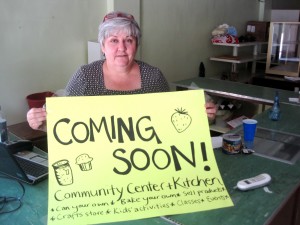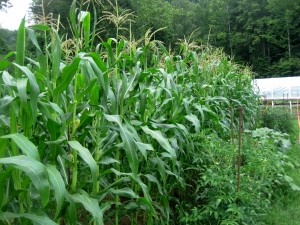
I’m a big fan of Transition Theory – a model of socioeconomic localization, developed by Rob Hopkins where communities come together to envision and then develop a future where they are not dependent on oil.
The big question the community asks is:
“for all those aspects of life that this community needs in order to sustain itself and thrive, how do we significantly increase resilience and drastically reduce carbon emissions?”
And from this point, all kinds of initiatives develop – from food production, to education projects, to community groups… you get the picture…
In Appalachia there’s a different, yet similar, transition taking place, right in the heart of the Coal River Valley, in Whitesville, WV. Community activist Lorelei Scarbro writes to tell us:
“Our new community center is about to open. We will be celebrating our community coming together to make the place where we stand on the earth a better place for us all.
“Many members of the Coal River Valley recognize that we must begin the rebuilding process. We believe we must heal this very divided community and to heal we must find common ground. To find common ground we must have neutral territory, a “Third Place” where we can come together and work together.

“We have erected a community greenhouse, we have community gardens and we are getting ready to open a canning kitchen, arts and crafts center, learning center and business incubator for us and our neighbors. We believe if we can grow, harvest, process and market it locally we will all be healthier and wealthier.
“We have many talented craftsmen in the area. We are hosting workshops where we can share our skills and learn from others. We want to pass down those time honored traditions such as canning, quilting, music and many more to the next generations. We are bridging the gap with the knowledge, experience and wisdom that comes with age and the education, dedication and ideas that come with youth.
As a community organizer I learned that what the people of the Coal River Valley needed the most was hope and I think it starts here. This is about empowering the people who are rooted in the community, those who have lost hope and feel as though their voice is not heard.
It’s a real transition in progress. To build a sustainable future, to build resilience, we must invest in our communities, in our traditional skills and knowledge. This community-led example from Whitesville, WV gives me hope.